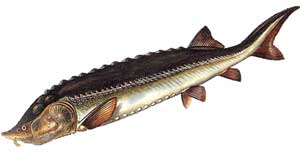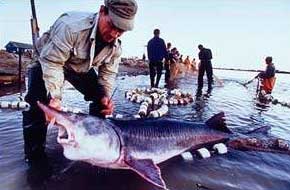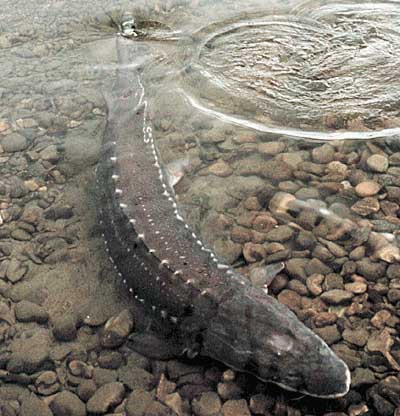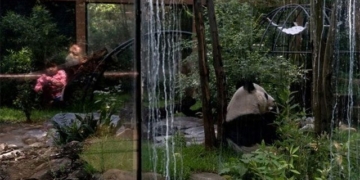The Beluga sturgeon, scientifically known as Huso huso, can thrive in both freshwater and saltwater environments. It is a highly valued fish in the market due to its delicious and nutritious meat and roe, with the roe being used to make caviar, a delicacy with significant economic value.  The swim bladder of the Beluga sturgeon is also valuable, as the inner membrane is used to produce isinglass—a pure form of gelatin that is useful in many industries.
The swim bladder of the Beluga sturgeon is also valuable, as the inner membrane is used to produce isinglass—a pure form of gelatin that is useful in many industries.
The Beluga sturgeon inhabits rivers or seas depending on its developmental stage. Mature fish migrate from the sea into rivers around March, swimming upstream into tributaries by May. There, they spawn in fast-flowing waters, with the eggs clinging tightly to rocks until they hatch.
After spawning, adult fish swim back to the sea, while the juveniles remain in the river for several years before eventually moving out to the ocean. It takes at least 20 years for the Beluga sturgeon to reach maturity and be capable of reproduction—at which point they again migrate from the sea back to the river and upstream.
Beluga sturgeons spawn in large quantities: a female measuring 3 meters can produce over 3 million eggs, weighing a total of 115 kg. Mature females preparing to spawn are often captured by fishermen to make caviar.
The Huso huso has a quite unique appearance: its head is covered with bony plates, and it features five similar bony ridges running along its body.  Its mouth is toothless, with a long snout and four sensitive barbels used to scour the seabed or riverbed for food. The body is elongated and flattened; the back is slightly blue or brown, the sides are lighter, and the belly is white.
Its mouth is toothless, with a long snout and four sensitive barbels used to scour the seabed or riverbed for food. The body is elongated and flattened; the back is slightly blue or brown, the sides are lighter, and the belly is white.
This rare species of sturgeon prefers to live a solitary life, often swimming close to the seabed or riverbed in search of prey. Their diet consists of small fish, benthic invertebrates, and occasionally they can be seen hovering in the mid-water column.
Historically, fishermen have caught Beluga sturgeons measuring up to 3.9 meters and weighing around 800 kg. However, it is now rare to find a Huso huso longer than 2.5 meters and heavier than 360 kg.
In nature, the Beluga sturgeon is distributed in the Black Sea, Caspian Sea, Adriatic Sea, and Sea of Azov. They often migrate into the rivers Don, Kuban, Dnieper, Dniester, and Danube.
This species is currently pushed to the brink of extinction, partly due to pollution in the rivers and the construction of dams that obstruct migration, and partly due to overfishing. Additionally, adult females are often killed for their eggs, leading to a significant decline in the natural sturgeon population. The Beluga sturgeon matures slowly, taking about 20 years to reach reproductive age.


















































